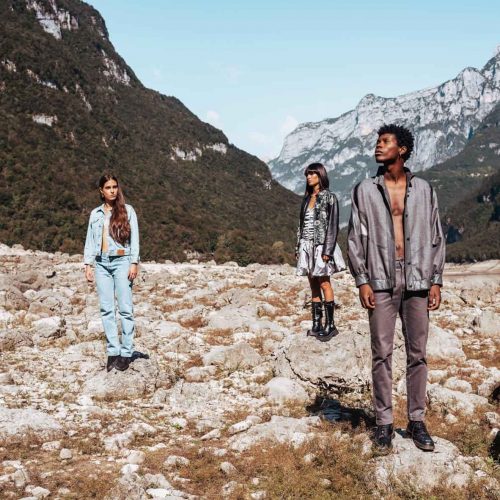Sustainable Thinking, at Museo Salvatore Ferragamo
Numerous artists are looking at sustainability, some focusing on recovering our relationship with nature, the use of organic materials, the need for a creative re-use of materials or relations between nature and technology, while others are looking at the importance of a collective commitment to refounding society overall. Museo Salvatore Ferragamo presents the exhibition “Sustainable Thinking”, created to make people reflect on these themes through visions of art and fashion.
“Sustainability” defines the human capacity to meet “the needs of the present generation without compromising the ability of future generations to meet their own needs”. It is a challenge that is not limited to production methods but also implies a greater focus on the environment overall. Equilibrium must be restored, beginning with a more aware and shared way of thinking that is capable of engendering new strategies of development and co-existence.
The Sustainable Thinking exhibition, held at Museo Salvatore Ferragamo from April 12th, 2019 to March 8th, 2020, explores Ferragamo sustainability from the avant-gardist spirit of the brand’s founder Salvatore Ferragamo in his revolutionary use of natural, recycled and innovative materials to the most innovative experimentation with responsible materials and techniques.
Designed by Stefania Ricci, Director of Museo Salvatore Ferragamo and Fondazione Ferragamo: with Giusy Bettoni, C.L.A.S.S. CEO and founder, Arabella S. Natalini, Sara Sozzani Maino and Marina Spadafora, the exhibition shares an artistic-cultural perspective on the vital issue of sustainability.
Sustainable Thinking aims to inspire consciousness on the increasingly crucial and contemporary issue of sustainability to a wider public.
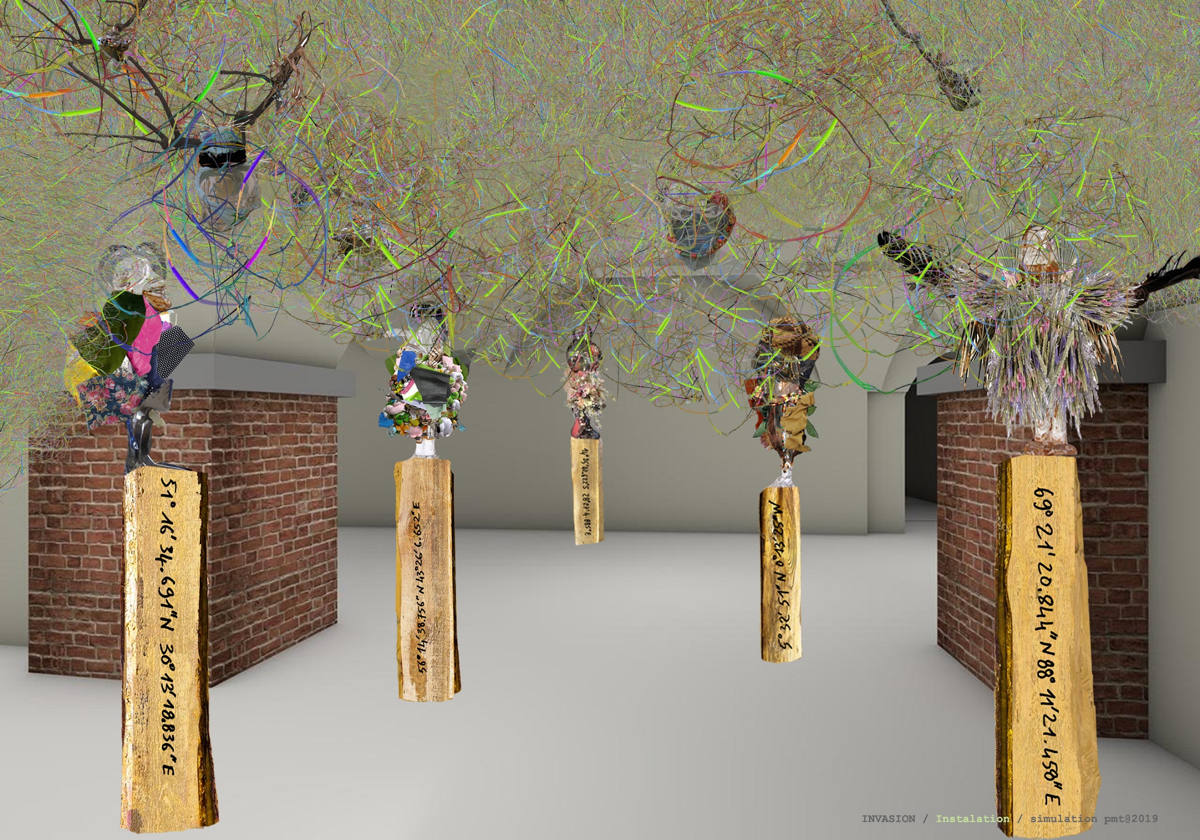
Pascale Marthine Tayou. Invasion. 2019. Installation site specific with Colorful line C (2015) coloured plastic drinking straws, Poupeés Pascale (2010, 2011, 2014, 2016) crystal and mixed media, Branch of Life (2017) in bronze and crystal, Mask (2014) in cristallo e tecnica mista / crystal and mixed media. © Courtesy of the artist and Galleria Continua, San Gimignano / Beijing / Les Moulins, La Habana.
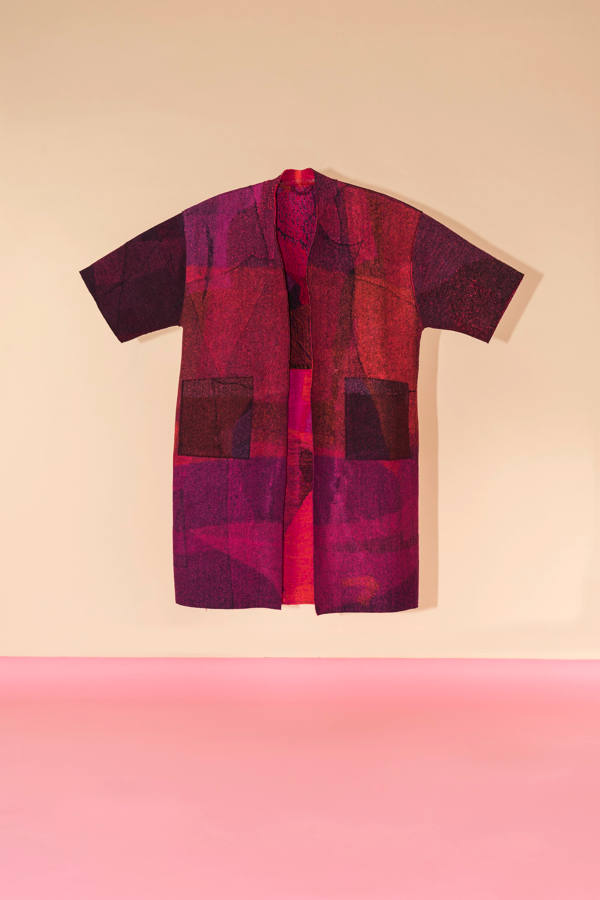
Eileen Fisher. Felted Kimono Coats. 2018. Coats made from organic cotton, wool, and cashmere from recycled felted garments, 90% biodegradable. © Courtesy Eileen Fisher, New York
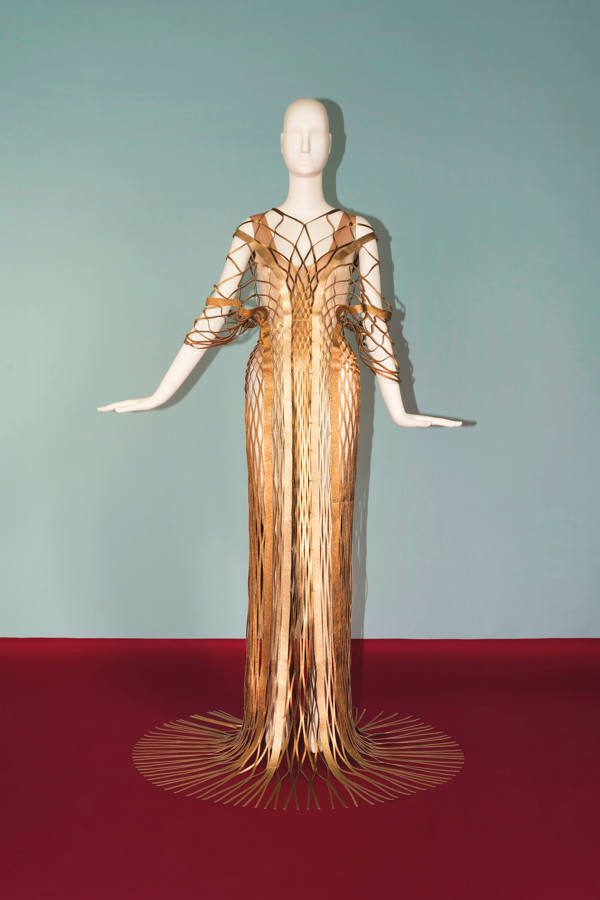
Maria Sole Ferragamo. Artemisia. 2018. Long dress made from waste leather from Salvatore Ferragamo, Guterman thread, 100% polyester, Made in Germany, a water-based glue for leather goods and sealent. © Courtesy Maria Sole Ferragamo
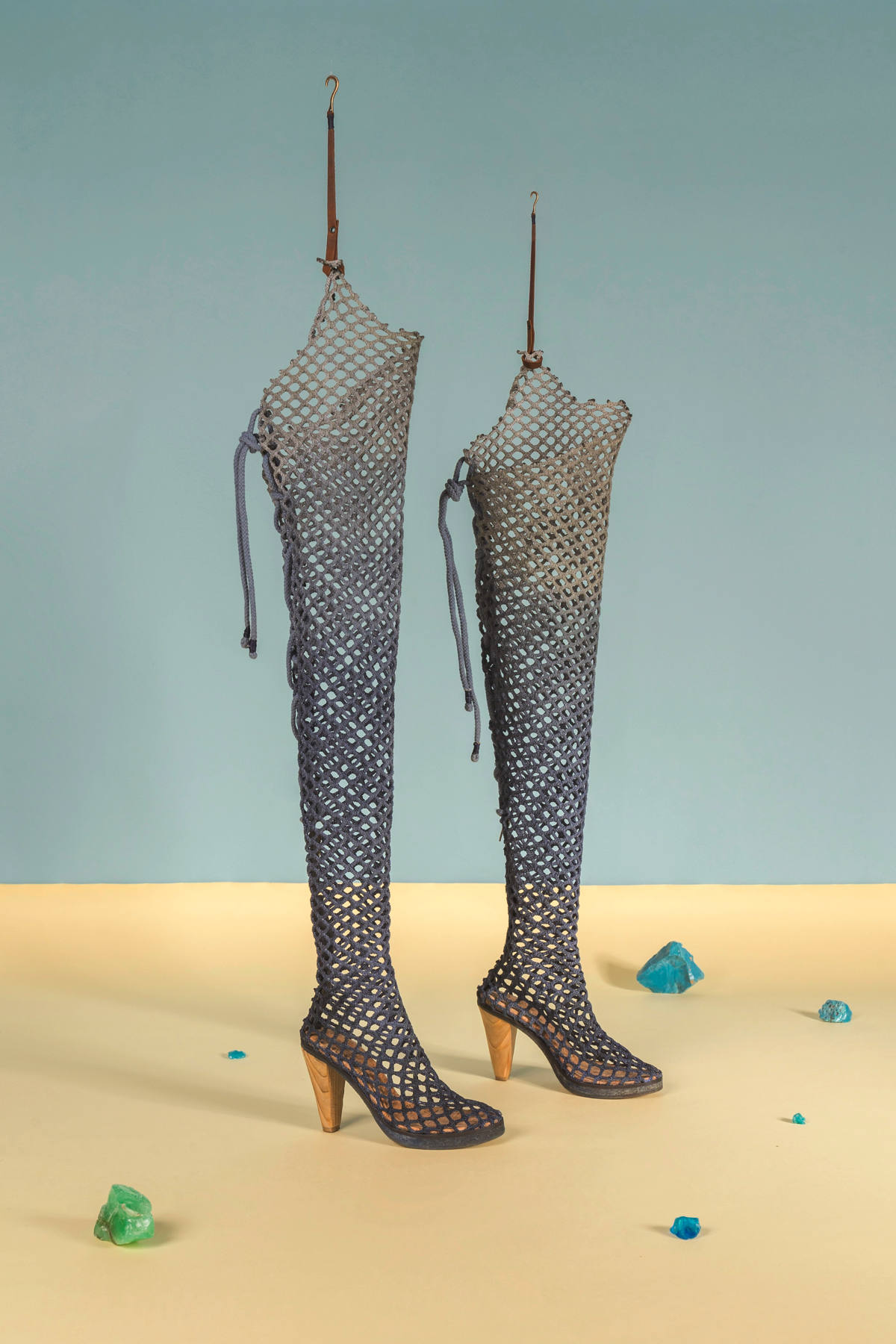
Andrea Verdura. Love you Ocean. 2018. Boot made from recycled fishing nets, sole made from recycled rubber and agglomerated cork, cedar wood heel. © Courtesy Andrea Verdura.
New visions of art and fashion
The aim of the Sustainable Thinking project is to make people reflect on these themes through visions of art and fashion. The fashion industry, for its part, embarked upon the path towards sustainability some years ago, not just through a new generation of designers but also through innovative approaches adopted by luxury brands with a consolidated market presence, using new high-performance ecological materials and optimizing production processes.
The exhibition provides an opportunity for artists, fashion designers, textile and yarn manufacturers to offer a plurality of gazes inspiring new projects capable of using new technologies rather than submitting to them, of adopting a local approach, and of safeguarding our ecosystem.
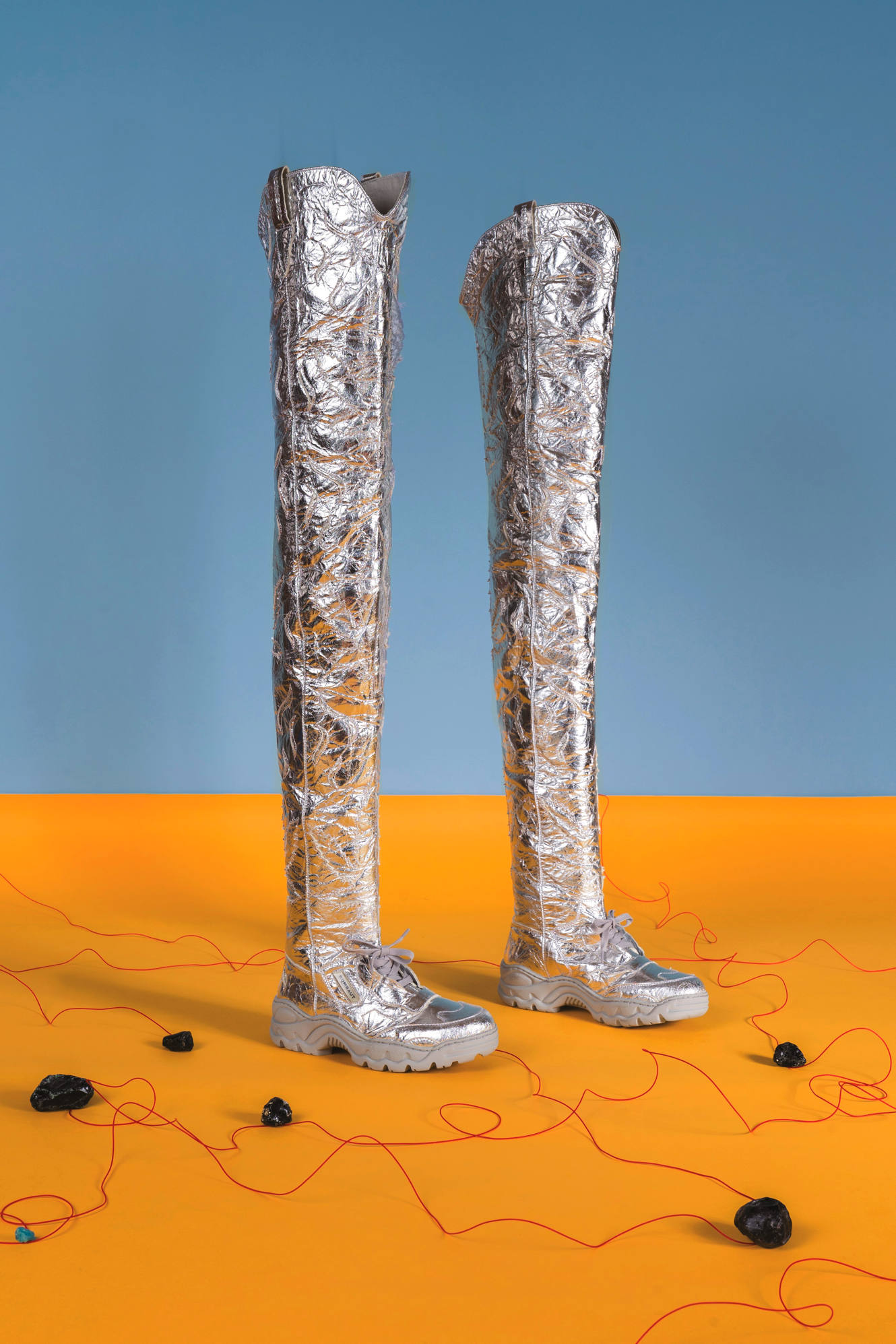
Mats Rombaut. Rombaut Piñatex Cowboy Sneakers. 2018. Boots with silver-coated Piñatex upper and rubber sole. © Courtesy Mats Rombaut
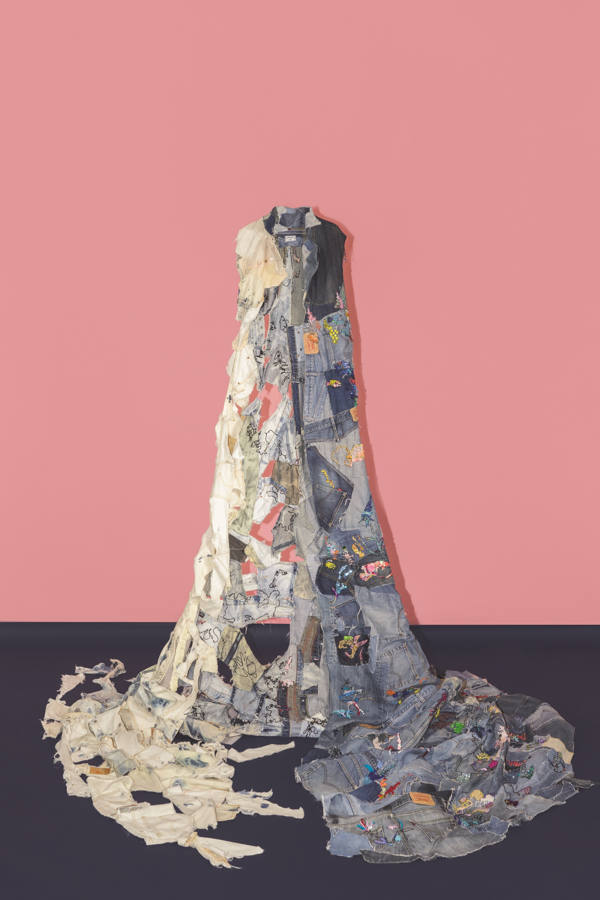
Nathalie Ballout. Acropora. 2018. Oversized coat made from used Levi’s hand-embroidered using various materials. The coat tells the story of the slow death of the coral reef, using embroidered stitches instead of words on an infinite ocean of blue denim patchwork. © Courtesy Nathalie Ballout.

Progetto. Quid Mosaico. 2018. Bodice made from spiral zips, skirt with scraps of vegan leather, canvas, gabardine, silk and a variety of fabrics This garment was designed by Alberto Brandoli, in collaboration with Valeria Valbusa and Anna Antonini. © Courtesy Progetto Quid,
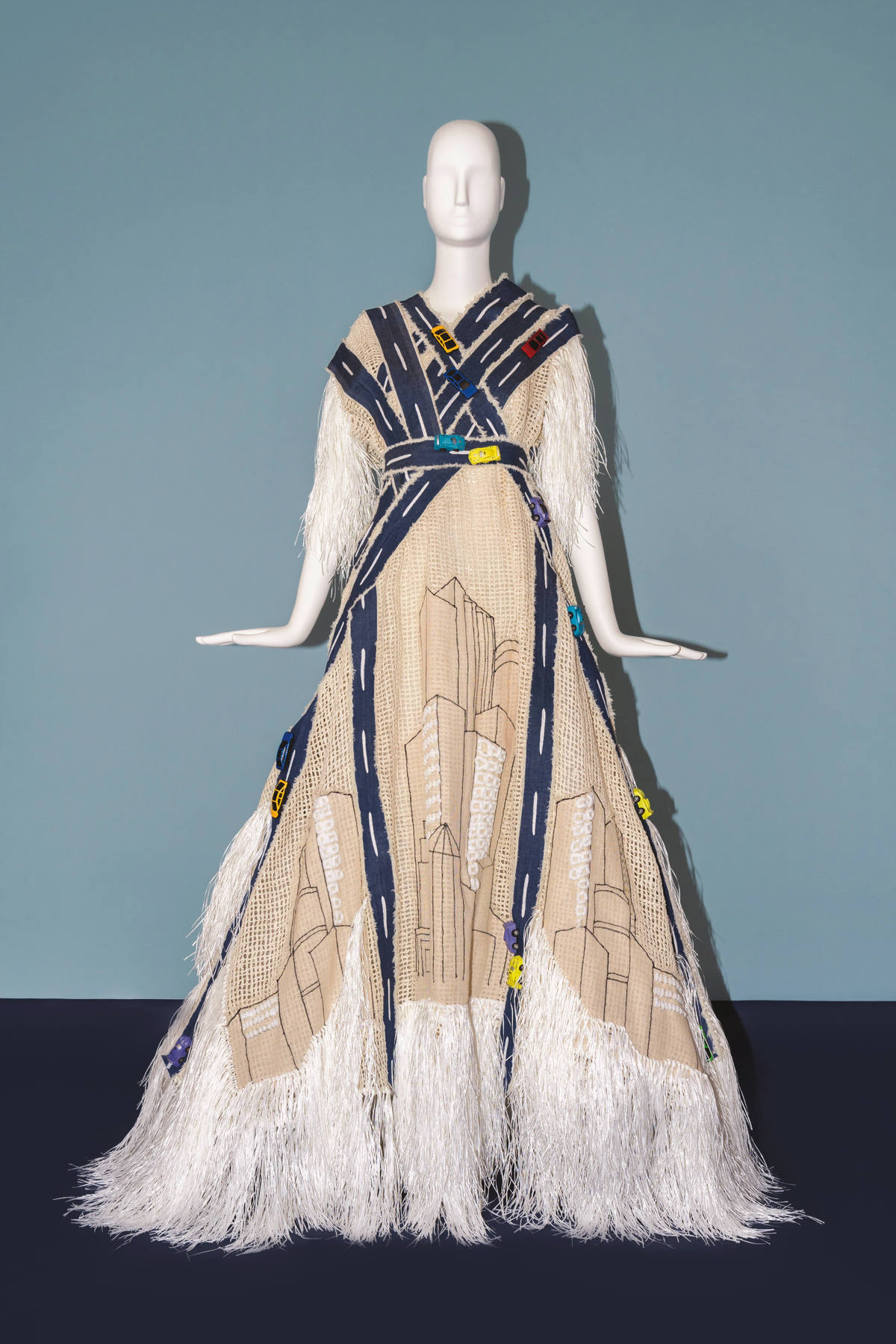
Hoh Pabissi. Highway. 2018. Gown in organic cotton embroidered in linen, organic jeans, fully recyclable cars and biodegradable fringing.© Courtesy Hoh Pabissi.
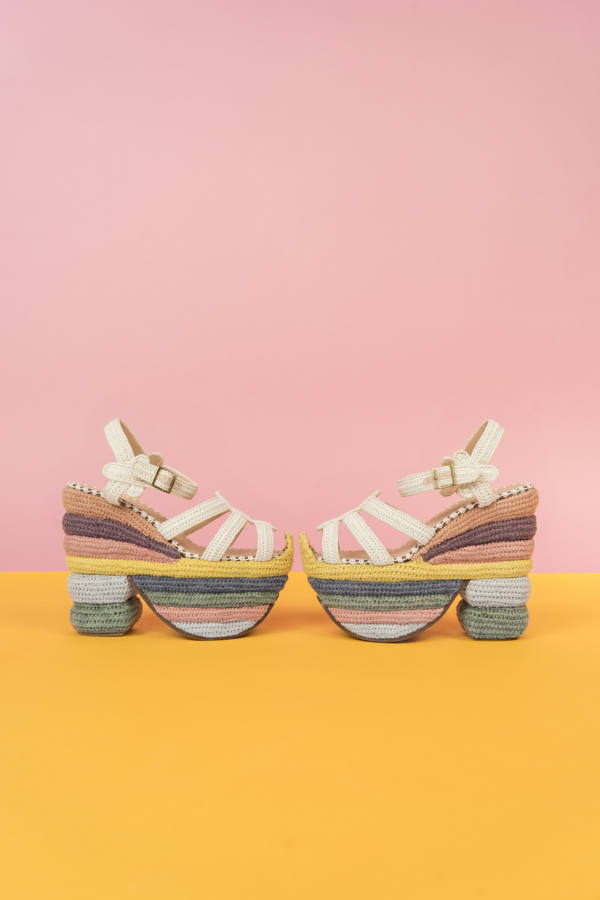
Salvatore Ferragamo. Rainbow Future. 2018. Hand made sandal in crocheted organic cotton, wooden heel and platform in layers covered in the same material Certificazione / Certification ISO 14067. Certification GOTS. © Salvatore Ferragamo.
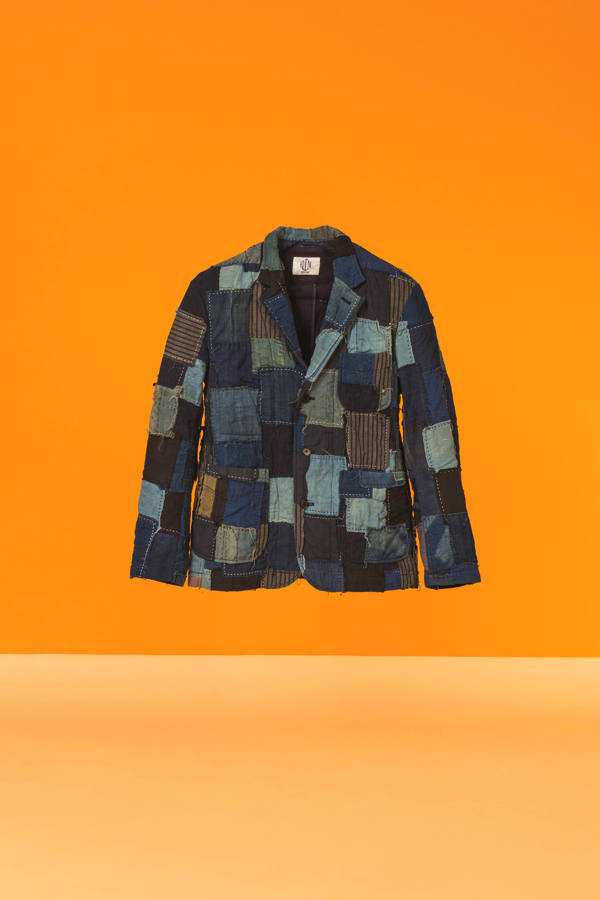
KUON. Up-cycled Boro Jacket. P/E_S/S 2018. Jacket made from 100% recycled cotton denim sewn together using the old Boro Sashiko mending technique practiced in rural Japan that involved sewing together scraps of used linen to create garments that are truly unique. © Courtesy KUON.
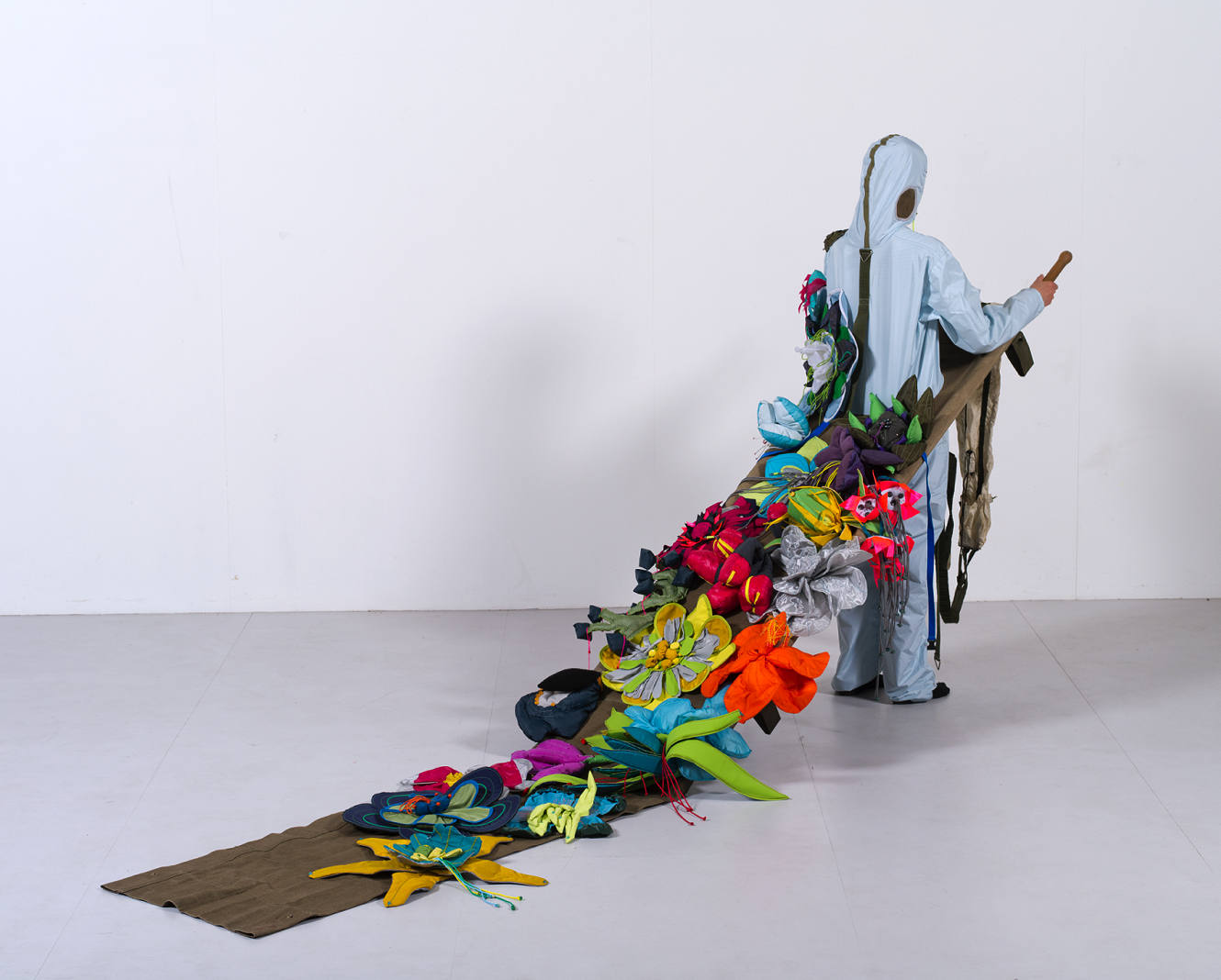
Lucy + Jorge Orta. Life Guard – Amazonia 2016. Wooden mannequin, different fabrics, ceramic resin hands and feet. © Courtesy Lucy + Jorge Orta.
Materials as leitmotiv
Materials are the leitmotiv throughout the exhibition: the suggested itinerary begins with the founder Salvatore Ferragamo’s initial research into materials in the 1920s, including hemp, cellophane and fish skin, to then explore the stories behind luxurious materials that, after reaching the end of their first life cycles, are transformed into quality products, becoming tangible examples of a circular economy.
Installations created using ancient crafting techniques present both the art of recycling and the rediscovery of handcrafting traditions, fundamental aspects of sustainable thinking. Moreover, the materials create layers of meaning, in which art is the tie between different cultural fields to be preserved in their diversity. Through experimentation, smart technologies open the door to change, leading to a virtuous rediscovery of natural fibres in an inexorable return to nature.



